A stand of sweet peas is an irresistible addition to any summer garden. Planted to grow up teepees, scramble over pergolas, fill pots, or (my favourite) grow in rows, potager-style, in cut flower patches.
You may also like
I started my cut-flower business by selling bunches of sweet peas from a barrow in the lane in front of my house, and I wouldn’t be without them. I love sweet peas for their scent as well as their crepe de chine frilliness. Each one is individual perfection; their scent draws you in and their appearance makes you smile. My clients love them, tumbling out of wedding bouquets, tight in table posies, or dotted about the house in handfuls.
Jump to
Watch three tips for growing sweet peas
How to grow sweet peas
When to plant sweet pea seeds
On my cut flower farm, I sow one crop in early October, and another in early February. The October sowing can flower in the polytunnel as early as late April. The February sowing is planted outside and flowers from late June and through July.
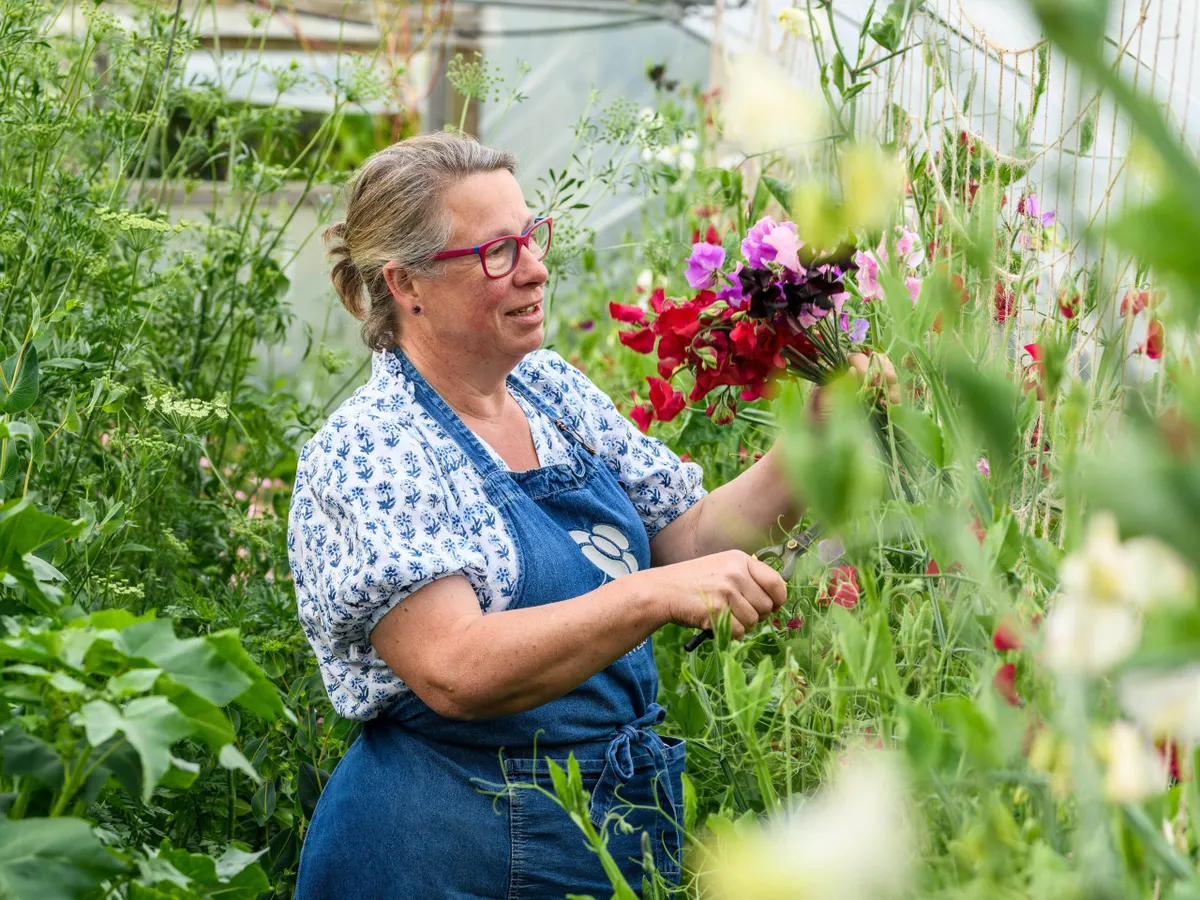
Sow after the autumn equinox and your seed will germinate slowly and sit quietly. Plants will develop strong root systems through the winter so that when you plant them out in the spring they can romp away, growing tall and producing long stems in early summer. Seedlings will survive a winter in cool greenhouse, polytunnel, or even a protected spot outside. If you sow post Christmas, the closer you sow to the summer solstice, the shorter your plants will be, with later flowers.
How to sow sweet pea seeds
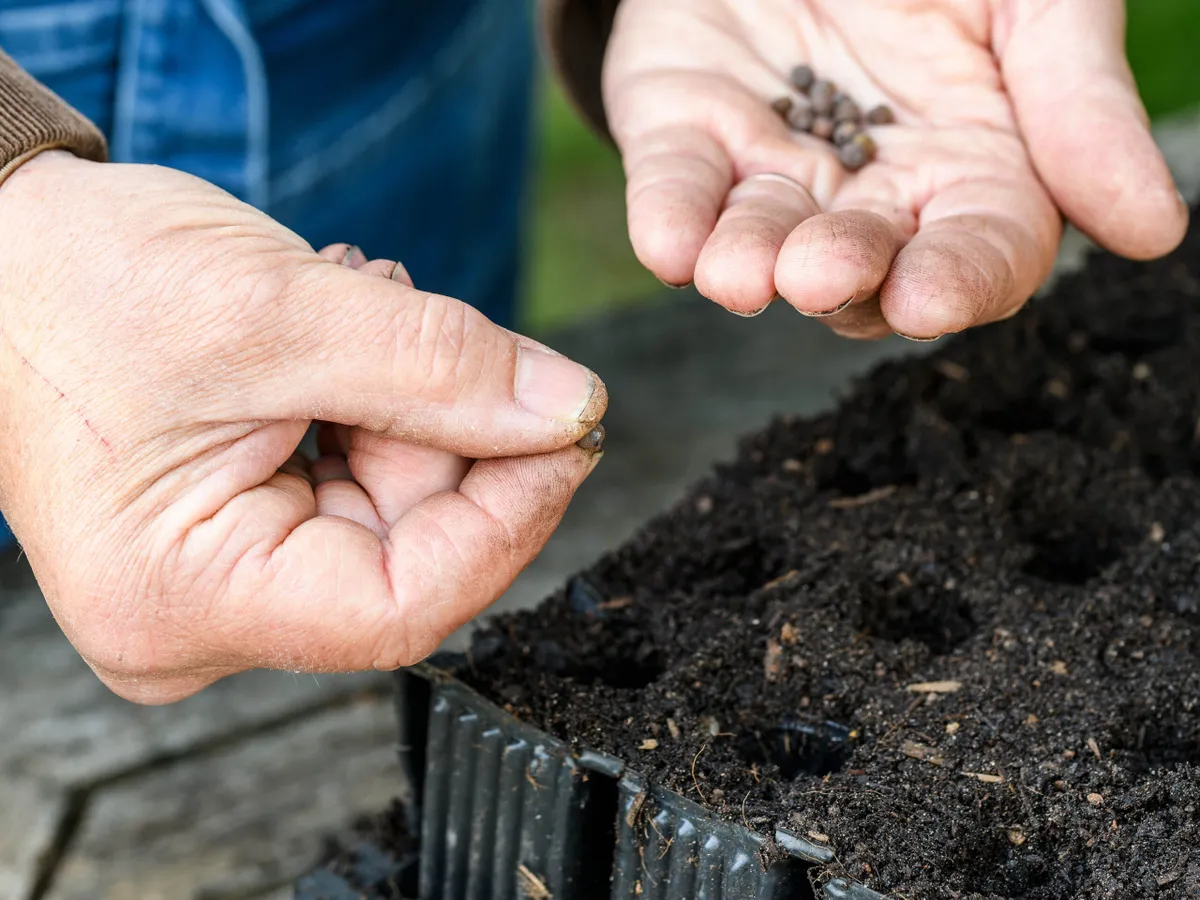
Sow into pots two or three times the usual depth of a seed tray. Sweet peas are leguminous plants and so like a deep pot to grow roots into.
My mother scores the shells of sweet pea seeds with a paring knife to encourage swift germination, and I used to soak seeds overnight before sowing, but now I sow fresh from the supplier and they germinate fine – perhaps a few days more slowly than soaked or pared seeds.
I sow seeds into free-draining, peat-free compost, one seed a knuckle deep per module. I use Rootrainer modules, which come in a special deep version ideal for sweet peas, and put them somewhere light and cool to germinate, covering the trays with a clear lid to protect from mice.
Pinching out sweet peas
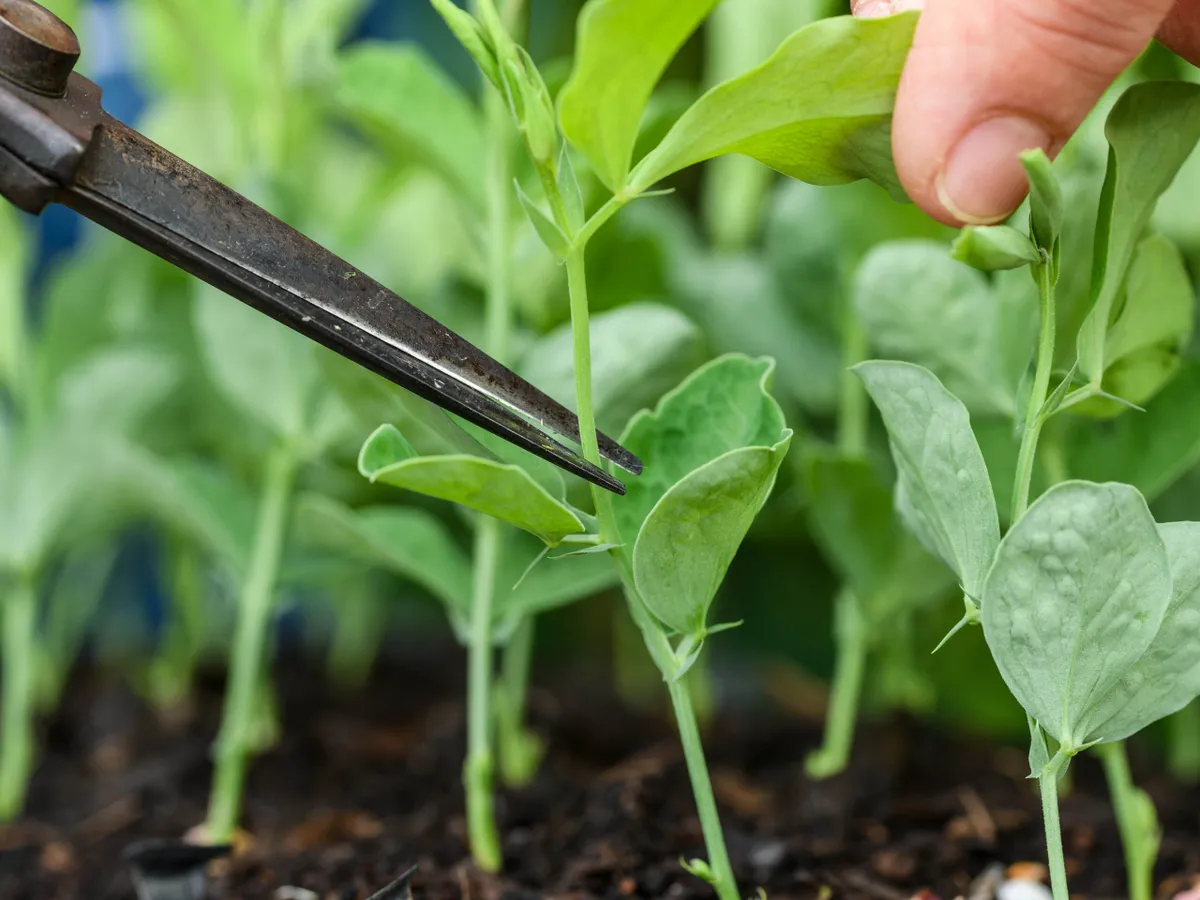
Pinch out germinated seeds, once they have grown up strong, to two sets of true leaves. I use snips or secateurs because my fingers are too blunt. Pinching out will encourage the plants to bush out, each plant giving three strong leading stems and lots of material to cut. Once the bushy side shoots have developed, you can pinch again, leaving one strong stem to grow cordon style up a string. This is the way to give you the longest flower stems and largest flowerheads. However, you don’t have to pinch out. I like bushy plants and lots of material for cutting.
Potting on sweet peas
If you’ve grown your sweet peas in Rootrainers then they won’t need potting on before planting out. If you’ve grown sweet peas in a normal seed tray or a few to a pot, it’s a good idea to pot them on into individual pots so that their root systems can grow unencumbered by a neighbour. Pot on after the pinching out phase.
Planting out sweet peas

Sweet peas like a humus-rich soil which holds plenty of water and a sunny spot. Dig a trench around 30cm deep and wide (it’s easier to do this if you are growing your sweet peas in a row rather than up a teepee). Fill the trench with good rich compost and leave it for a few days so that the birds can peck out slug eggs before you plant into it.
If you’re planting your sweet peas outside, give them a fortnight to harden off outside the greenhouse or protected space where they may have spent the winter.
Plant out your seedlings with up to 30cm between each other. This way greedy roots will never have to fight for food or water and there’ll be room for the bushy stems to climb high and flower. Water your newly planted out sweet peas in well and watch them grow. Feed fortnightly with a general purpose feed such as a seaweed solution.
Grow your sweet peas up jute netting. Sweet peas find it easy to grab on to the jute with their climbing tendrils and so require less tying in. Jute netting can also be thrown on the compost heap, so there’s no need to pull the netting away from spent plants at the end of the season – saving you a lot of work
Growing sweet peas in pots
Sweet peas can be grown in large, deep planters, but will likely go over more quickly than those planted in the ground because planters tend to dry out more easily and the goodness in the soil tends to be washed out with watering. Fill the pots with extra rich compost, water often, and feed weekly.
Picking sweet peas
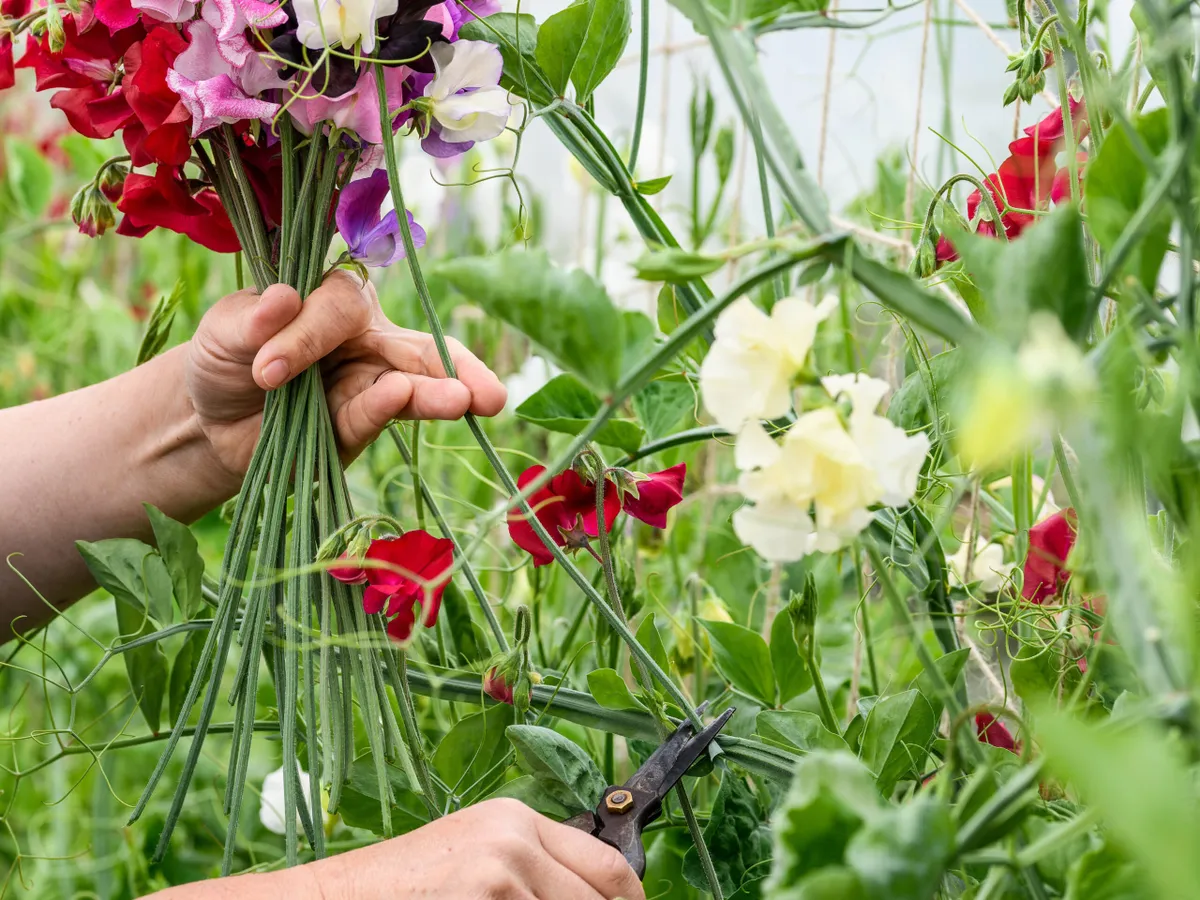
Harvest sweet pea flowers as often as you can to keep the plants producing more. The first flush will have the longest stems, and as the plant uses its energy to produce more, the stems will get shorter. To keep stems long, take up to half the leaves off the plant, and remove as many tendrils as you like. If you remove tendrils, you’ll need more string to tie your sweet pea plants to the netting they grow up.
Conditioning sweet peas
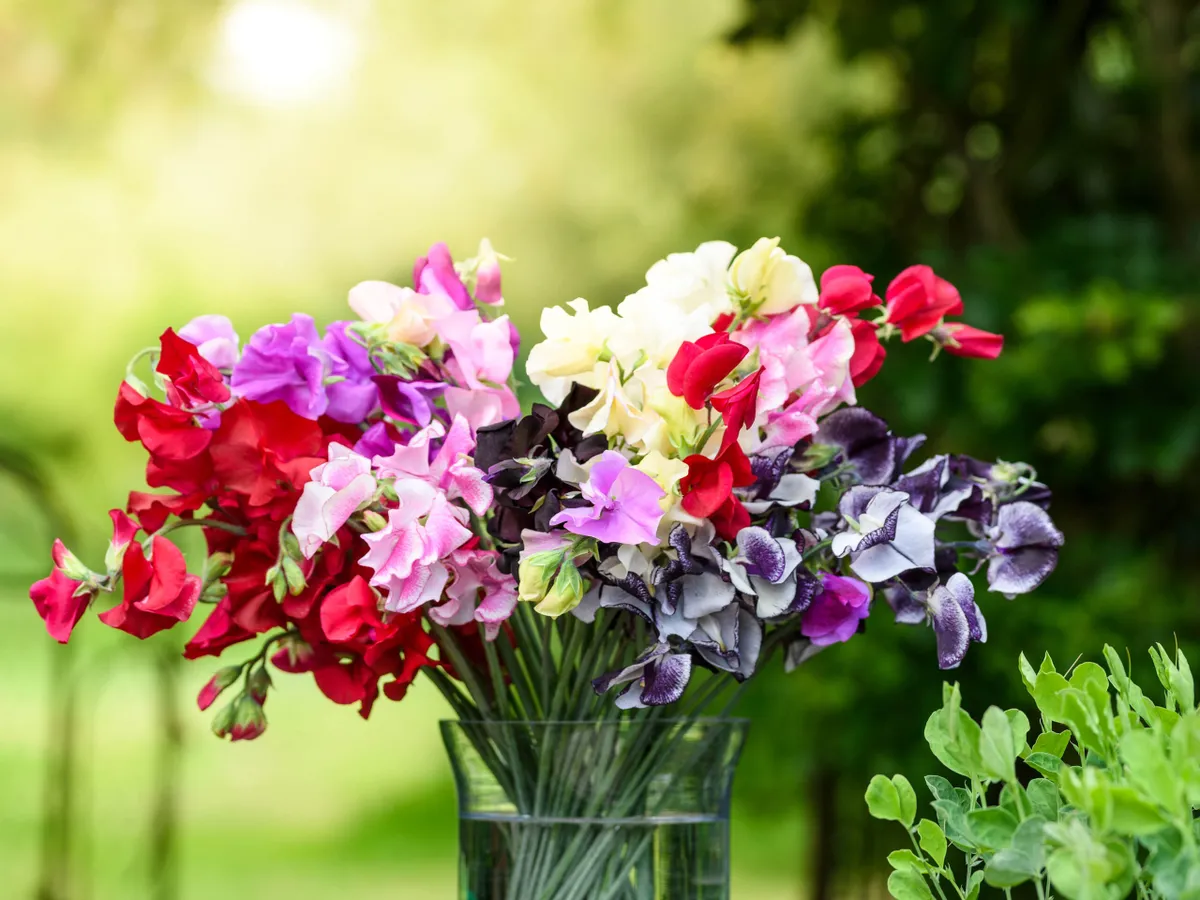
Because we don’t use floral foam, most of our floristry is water based, and plants don’t need extra conditioning for that. We cut straight into water and let them have a couple of hours’ drink before arranging them.
Sweet pea problems
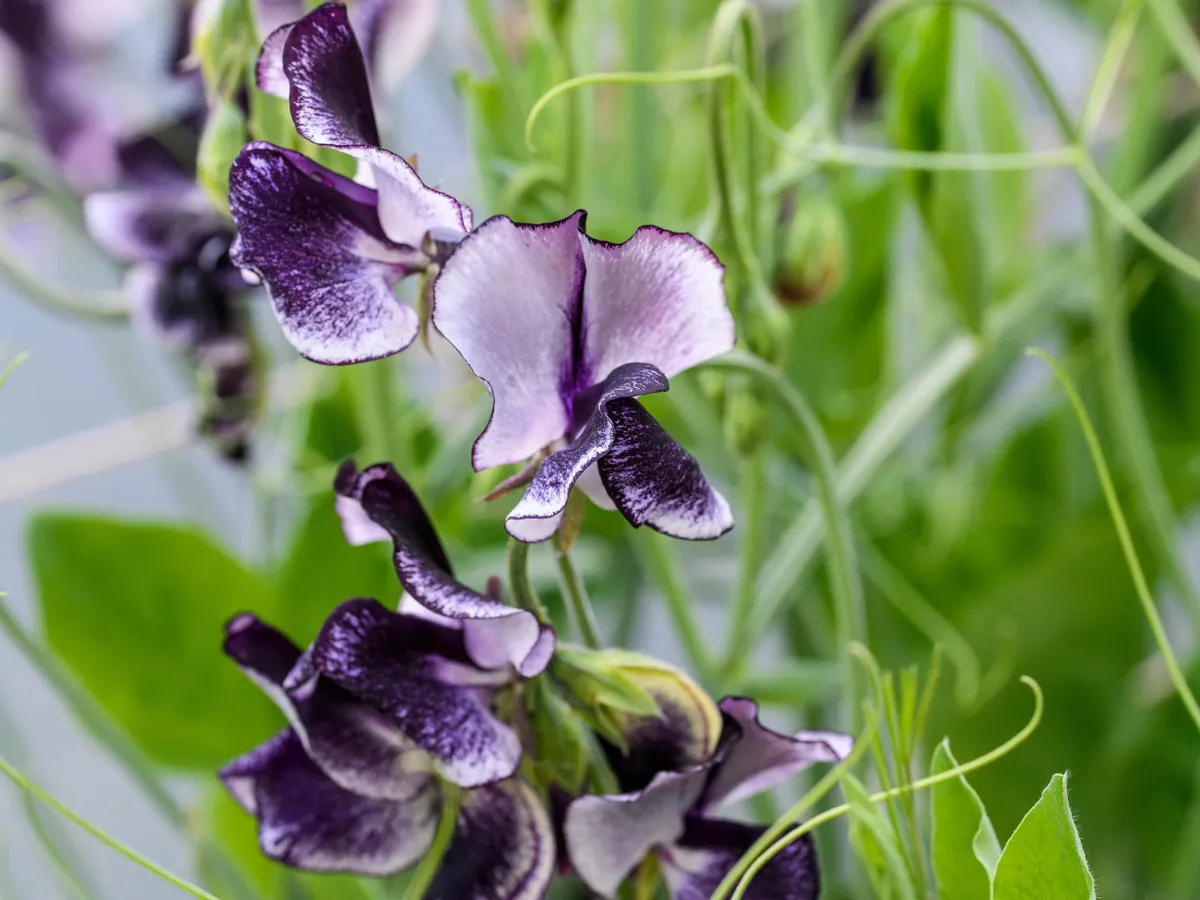
While sweet peas are generally easy to grow they do present some problems. They can be prone to aphid infestations, but I simply leave these as a protein-rich meal for beetles, small birds, hoverflies and ladybirds, which will take care of the problem for you.
Over-wintered seedlings can also look flea bitten. Once they are planted out they mostly grow away from their sad winter foliage and give you a great crop. In spring, the difference in air temperature between day and night can cause ‘bud drop,’ when the buds stop developing and fall off at the slightest touch.
They can also be prone to rust and mildew, and can brown from the ground up – often when the plants have been flowering for weeks. A gentle, fortnighty feed with seaweed solution will help slow the ageing process.
What to do with sweet peas when they have finished flowering
Sweet peas are annual plants: their objective to germinate, grow, flower, set seed, and die. By cutting flowers we slow that process, but if you want a long season of sweet peas you really need to plant a second crop later than the first so a high-summer flush of sweet peas can keep scenting your house and garden while the first plants have already been composted.
Save any fat, well developed seedpods you find on your plants and to sow the seeds next season.
Georgie offers workshops in flower growing both online and at her Somerset flower farm. For details head to www.commonfarmflowers.com